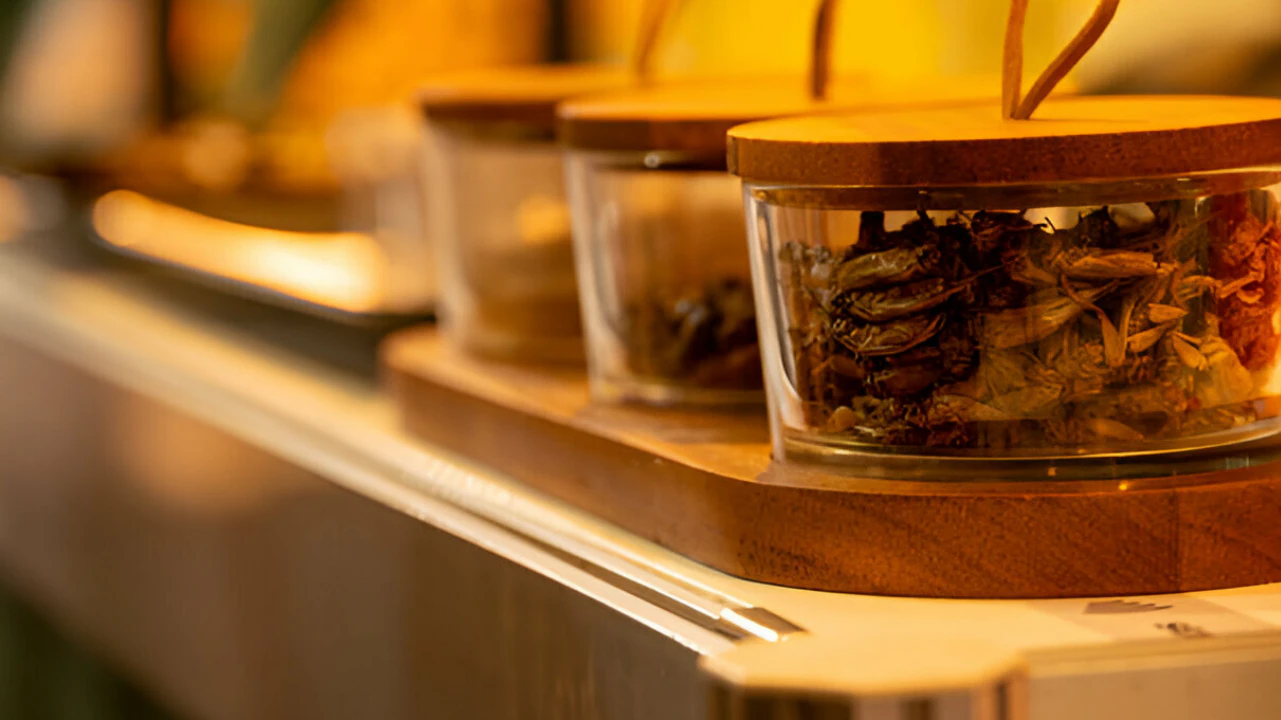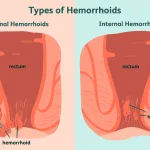So… You’re Telling Me Crickets Are Good for My Gut?
Let’s be real—when you first hear the word “cricket,” your mind probably goes straight to summer nights, chirping sounds, and maybe even that one time a cricket got into your kitchen and wouldn’t stop singing at 2 a.m. But as food? That’s a twist, right?
And yet, here we are. More and more people are discovering that crickets might actually be a gut-friendly superfood. No joke. Scientists are studying them. Chefs are cooking with them. Even athletes are blending them into smoothies. So what’s the deal?
If you’re feeling a little unsure—or maybe slightly grossed out—don’t worry, I totally get it. I was right there with you. But here’s the thing: curiosity has this weird way of dragging us into surprisingly fascinating territory. So let’s just have a real, laid-back chat about why munching on crickets might actually be one of the smartest (and most gut-friendly) choices you could make—for yourself and the planet.
Why Are People Eating Crickets? Like… Actually Eating Them?

This might seem like one of those quirky new food trends, but truth is, it’s far from new. More than 2 billion people across the globe already include insects in their daily meals. It’s mostly folks in the West who are just starting to catch on.
A Long-Standing Tradition Around the World
In places like Thailand, Mexico, and Uganda, eating crickets (and a bunch of other bugs) isn’t considered strange—it’s just normal. They’re fried, roasted, turned into powder, and served up as crunchy snacks or blended into wholesome dishes. In some spots, they’re even seen as a bit of a delicacy.
Meanwhile, here in the U.S. and Europe, we’ve kind of grown up thinking bugs are gross. But that mindset is shifting—thanks to climate change, worries about food security, and a growing curiosity about more sustainable ways to eat.
More Than a Trend: It’s a Food Revolution
Let me paint a quick picture. A food start-up in California begins selling cricket protein bars. A few curious foodies give them a shot. They’re shocked: “Wait—this is… good?” Word spreads. A dietitian backs it. A fitness influencer posts about gut health. And suddenly, crickets are having a moment.
It’s not just about novelty—it’s about finding smarter, cleaner ways to nourish our bodies and the earth. And that’s a movement worth buzzing about.
So, What’s the Deal With Crickets and Gut Health?

If you’ve ever taken a probiotic, eaten yogurt “for digestion,” or gotten curious about kombucha, you already know your gut is kind of a big deal. It’s not just about avoiding bloat—it’s the command center for your immunity, mood, energy, and even your skin health. Enter: crickets.
The Prebiotic Power of Chitin
Crickets contain a special kind of fiber called chitin. It’s part of their exoskeleton—that shell-like material you don’t even notice when eating cricket flour. Chitin behaves like a prebiotic, which means it feeds the good bacteria already living in your digestive tract.
Think of your gut like a garden. Probiotics are the seeds. Prebiotics? They’re the water, sunlight, and nutrients that help those seeds grow. And chitin is particularly good at this because it’s not digested in the stomach—it makes its way to your intestines and nourishes beneficial bacteria, like Bifidobacterium.
Gut-Friendly Results From Real Research
A 2022 study led by researchers at the University of Wisconsin had participants consume cricket powder daily for two weeks. The results? A noticeable increase in beneficial gut bacteria and a decrease in a key inflammatory marker. That’s kind of a big deal.
Why? Because reducing inflammation in the gut can lead to better digestion, a stronger immune response, fewer skin breakouts, and even improvements in mood. Ever heard of the gut-brain connection? This is where it starts to get exciting.
The Gut-Brain Connection: Crickets May Boost More Than Digestion
Your gut is often called your “second brain.” It produces over 90% of your serotonin—the feel-good chemical that helps regulate mood, sleep, and emotional well-being. If your gut is out of whack, chances are you feel it in more ways than one.
By nourishing the microbiome with prebiotics like chitin, you’re not just easing digestion—you could be positively influencing your entire body. That’s powerful stuff, and crickets deliver it naturally, without pills or powders with 50 ingredients you can’t pronounce.
Crickets Are Tiny, But Their Nutrition Is Mighty
Let’s zoom out from the gut for a moment. Because honestly? Crickets are kind of a nutritional rockstar. Don’t let their size fool you—these little bugs are stacked with the kind of goodness that usually takes a whole fridge shelf of ingredients to match.
Complete Protein, Minus the Heavy Footprint
Crickets are a complete protein source, which means they contain all nine essential amino acids your body needs but can’t make on its own. Most plant-based proteins don’t tick that box without combining multiple sources. But crickets? They show up fully equipped.
In fact, per 100 grams, cricket powder can contain up to 65 grams of protein. That’s more than chicken. More than beef. And way more sustainable, which we’ll get into later.
Micronutrient Heaven
Crickets are also rich in iron, calcium, potassium, omega-3 fatty acids, and vitamin B12. And that’s not just good news for gym-goers—it’s helpful for anyone looking to boost energy, bone strength, and brain function.
Cricket vs. Traditional Protein (Let’s Break It Down)
| Nutrient | Crickets (100g) | Beef (100g) |
|---|---|---|
| Protein | 65g | 26g |
| Iron | 5.1mg | 2.6mg |
| Vitamin B12 | 2.1μg | 2.0μg |
| Omega-3 | Approx. 1.2g | 0.9g |
Basically, crickets deliver a serious nutritional punch in a very tiny package. And unlike many supplements or processed bars, their nutrients come in a natural, bioavailable form—meaning your body knows exactly what to do with them.
Low in Carbs, High in Fiber
Crickets are also low-carb and rich in fiber, especially thanks to chitin. This makes them ideal for folks on keto, paleo, or gut-conscious diets. Plus, the combo of protein and fiber keeps you fuller for longer—no 3 p.m. snack crash.
Honestly, they’re like nature’s version of a balanced protein shake. Just crunchier (unless it’s flour, then not crunchy at all).
It’s Not Just About You—Crickets Are Good for the Planet Too

Let’s get honest for a second. Eating well isn’t just about calories or macros anymore. It’s about impact. And as we face rising global temperatures, food shortages, and environmental strain, more of us are asking: “How can I eat in a way that’s sustainable?”
And that’s where crickets quietly (but powerfully) hop in.
Less Land, Less Water, Less Waste
Compared to traditional livestock, crickets are downright humble in their resource needs. They require 12 times less feed than cattle to produce the same amount of protein. They need virtually no water beyond what’s in their food. And they emit 100 times less greenhouse gas than cows.
Think about that: by choosing cricket-based products even a few times a month, you’re lowering your carbon footprint without giving up on nutrition—or taste.
Zero-Waste Farming? Crickets Are Close
Most of the cricket can be used for food, leaving behind very little waste. Some cricket farms even turn waste into fertilizer. It’s a beautiful loop—nature at its most efficient. And if we’re serious about feeding a growing population (hello, 10 billion by 2050), we’re going to need food sources like this.
But Let’s Talk About the “Ick” Factor
It’s totally okay to feel a little weird about eating bugs. Our culture hasn’t exactly made room for this kind of thing. But here’s the truth: just because something feels unfamiliar doesn’t mean it’s wrong—or unsafe. It just means we’re not used to it yet.
And the beauty of modern cricket products is that they’re made to be accessible. No eyes. No legs. Just finely milled powder or protein blends you’d never guess came from an insect. The only thing you’ll notice is the energy, the satiety, and maybe the pride of trying something new and eco-friendly.
What About Ethics?
Good question. Many cricket farms operate under strict animal welfare and cleanliness standards. Because crickets are cold-blooded and live in close colonies naturally, they’re not prone to the stress and suffering we associate with factory farming. Their farming mimics their natural life cycle, which makes ethical sourcing easier to achieve.
Curious But Cautious? Here’s How to Start Eating Crickets

Look, I get it. Eating crickets still feels a little “out there” for most of us. But trying something new doesn’t have to be a big dramatic moment. You don’t need to go full Bear Grylls and crunch down on a whole roasted bug. (Unless that’s your thing—in which case, go you.)
There are subtle, easy, and surprisingly tasty ways to explore crickets that feel natural and even fun. Think of it like adding a new protein powder to your routine, just with a cooler backstory.
Step One: Try Cricket Powder (AKA Cricket Flour)
Cricket powder is probably the most popular and beginner-friendly way to get started. It’s made by roasting and grinding crickets into a fine, brown flour that smells nutty and earthy—almost like toasted almonds.
It blends easily into:
- Protein smoothies (you’ll barely notice it)
- Banana or chocolate pancakes
- Energy balls and no-bake snacks
- Baked goods like muffins or cookies
My Favorite Starter Recipes
- Chocolate Banana Cricket Pancakes: Mix 1/2 cup oat flour, 1 banana, 1 egg, 2 tbsp cricket powder, cocoa powder, and cinnamon. Cook like regular pancakes and serve with almond butter or maple syrup.
- No-Bake Cricket Energy Bites: Blend rolled oats, peanut butter, honey, 2 tbsp cricket powder, chia seeds, and dark chocolate chips. Roll into balls, chill for 30 minutes, and snack on them all week.
Step Two: Cricket Snacks
Still not ready to bake? Try pre-made cricket snacks like:
- Chapul bars
- Bitty Foods cookies
- Roasted cricket snacks with flavors like BBQ or sea salt
These are great to toss in your bag, eat at the gym, or share with a friend (cue the “guess what this is” face!).
What Does Cricket Actually Taste Like?
Honestly? Mild, nutty, and slightly earthy. Not gamey or buggy at all. Most people say it reminds them of sunflower seeds or toasted almonds. When it’s baked into something, it blends right in. No wings, no crunch, no cringe.
Final Thoughts: Small Bugs, Big Benefits
So here we are. We’ve talked about gut health, protein, sustainability, recipes, and even taste. And maybe—just maybe—you’re feeling a little more curious, a little less weirded out, and a lot more empowered.
At the end of the day, crickets aren’t just a quirky food trend. They represent a shift in how we think about nourishment, nature, and our future. They offer a powerful mix of benefits: gut-supporting prebiotics, complete protein, essential nutrients, and an impressively tiny environmental footprint.
They’re not here to replace your favorite foods—they’re just another option in your wellness toolbox. A small, humble, and honestly pretty amazing one.
It’s Okay to Take It Slow
You don’t have to go all in today. Maybe you start with a cricket protein bar. Maybe you add a scoop of powder to your smoothie. Or maybe you just sit with the idea for a while and let it simmer. That’s totally okay. Trying new things should feel exciting, not overwhelming.
And hey, if you do decide to give it a try, don’t forget to have fun with it. Experiment. Laugh at the reactions. Share your experience. And who knows—you might end up inspiring someone else to think a little differently, too.
So… What Do You Think?
Would you be down to give crickets a shot if it meant better digestion, more energy, and doing right by the planet? Got questions or feel a little weird about it? Totally fair—let’s talk it out.
Seriously, I want to hear from you. Drop a comment, share your thoughts, or even post your go-to cricket recipe if you’re already on board. Let’s keep the convo going—because the more we talk about this stuff, the more we can normalize choices that are good for us and the planet.
Thanks so much for hanging out and keeping an open mind. Sometimes, the biggest changes come from the tiniest steps. 🦗💚


















Leave a Reply
You must be logged in to post a comment.